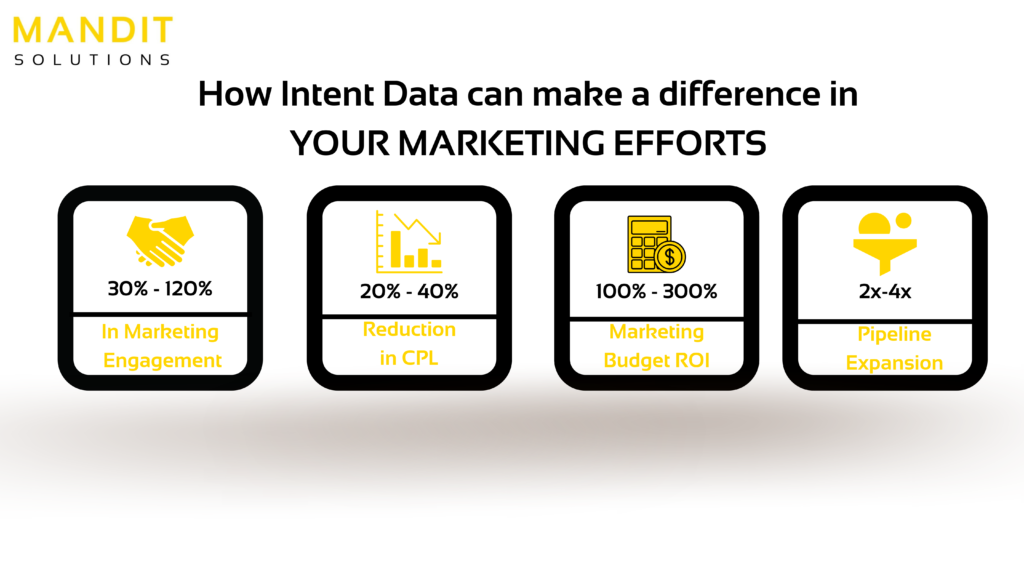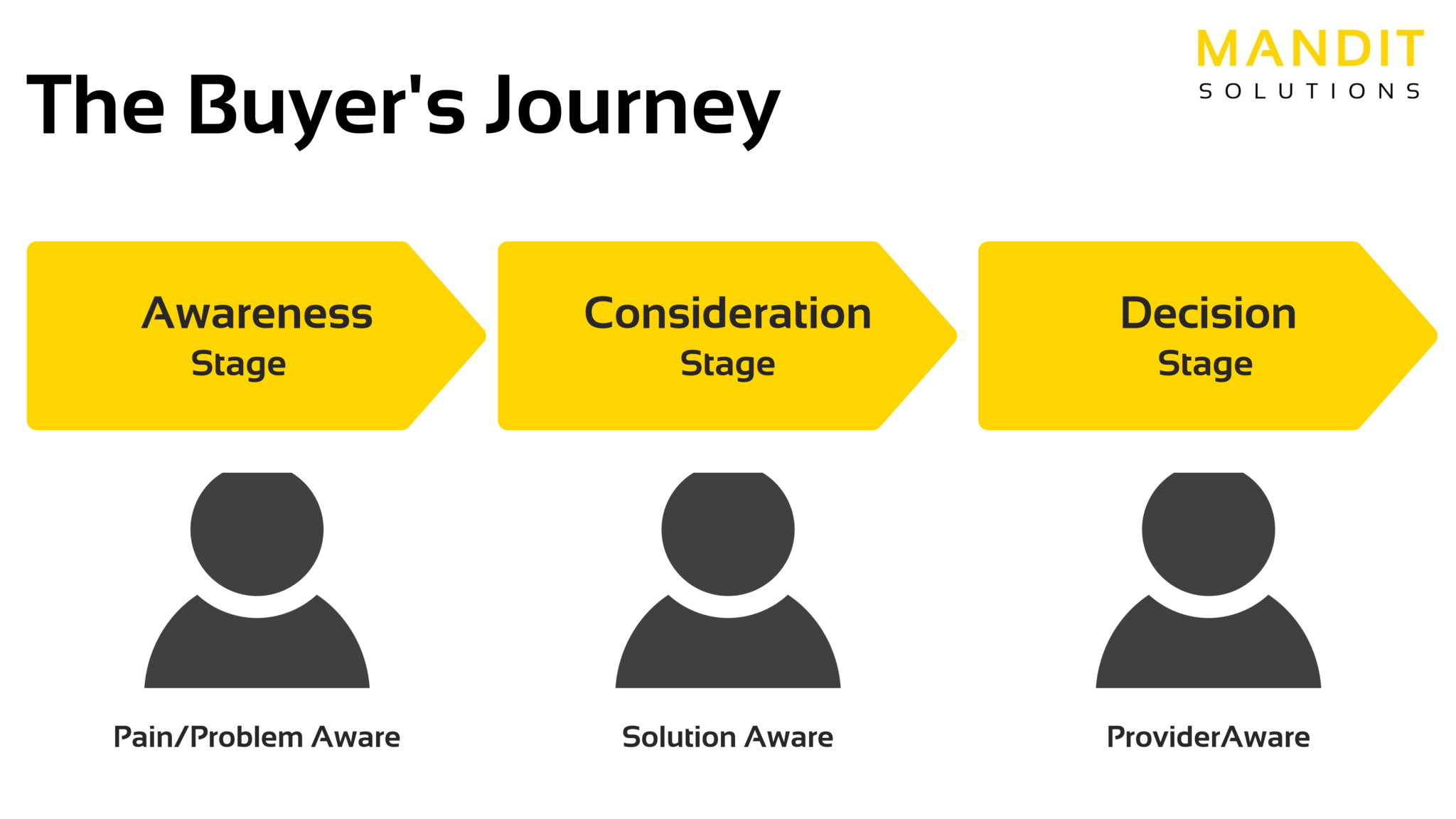Why Intent Data is a Must-Have to Boost Your Revenue in 2022?

There is optimism that 2022 will be a significant improvement over 2021 in practically all sectors of business and daily life, including B2B marketing.
The year before, the pandemic compelled a digital awakening in B2B marketing, as tried-and-true strategies such as in-person events and conferences were suddenly abolished overnight. This move substantially affected the B2B scene, maybe forever, as we were all compelled to adapt, evolve, and flourish in a new world.
Interactions are more computerized than ever before. Buyers conduct their research on their own terms, at their own leisure, and entirely online. And, without a doubt, Zoom weariness exists – in fact, no one wants to book another Zoom call with a vendor. Meanwhile, remaining top of mind for vendors is more difficult. This conflict has significantly affected the process of matching firms with buyers.
Faced with these new realities and ever-shrinking budgets, many marketers are turning to Precision Demand Marketing, a buyer-driven B2B Intent-based marketing approach. Marketers may adjust the purchasing experience to fit the changing demands of their prospects by using digital signals from buyer behaviors and solutions.
When buyers contact sales professionals, they are typically 57% of the way through the purchase process. And just 5% of the buying time is spent with sales personnel, making it increasingly difficult to differentiate yourself from your competition.
(Source: Gartner)
How to Make Your Intent Data Actionable?
Understanding who your target customers are and what they’re up to provides your sales team with greater influence over the invisible buyer journey.

Here’s how to define your ideal customer profile with intent data:
1. Match Intent to the Right Accounts
Analyzing online activity is not a new concept – for a long time, marketers have used Google Analytics, Keyword Planner, and other search engine-related tools to keep track of what everyone is doing on their pages.
Feel free to classify the overall on-site activity as “intent data,” but keep in mind that this data is anonymous – it won’t provide you with any useful insights unless you correlate the data points to specific organizations.
Matching collected intent data to specific organizations provides a more complete view of the whole buyer journey – you can determine which behavior is from your ideal customer profile and which stage of the buyer journey they are in.
2. Identify Buying Intent
The purpose you’ve gathered often falls into two categories:
● Accounts with Buying Intent: Accounts who are interested in your items and are ready to buy.
● Learning Intent: accounts that are conducting research to understand more about the solutions or individuals that find your blog article interesting and useful. They might be potential consumers or simply folks who enjoy reading a lot.
You must determine which key behaviors are indications of buying intent (e.g. checking the price page), what counts as a learning intent (e.g. merely reading your blog pages), and how to act on them differently to get a greater conversion rate and a more efficient revenue team.
3. Capture Buying Signals
When it comes to consumer preparedness, not all actions should be equally weighted. You may begin by constructing an intent score system by ticking the following boxes:
● Recency: When was the last time they visited your website?
● Relevancy: which pages and types of material have they examined?
● Frequency: how often they visit your website.
Accounts who read your blog articles, emails, and eBooks, for example, have a greater learning intent or are not yet in the market, but those that visit your price page, product sites, and demo pages are more likely to buy.
You may shift from targeting your ICP to focusing on IICP by scoring and monitoring the purchasing signals.

Why Intent Data is a Must-Have in 2022?
Nothing is more vital than audience insights when designing your revenue growth strategy for 2022.
Intent data delivers insights to your customer-facing staff to boost engagement and conversion, from awareness through retention.
1. Intent Data for Sales
With a well-defined collection of qualifying intent data, you can quickly boost the account-based sales process:
● Reduce research time: Instead of manually locating prospects, your sales staff may conduct a deep dive into the revealed website visitors, choose their in-market ideal clients, and prospect them using individualized information.
● Meet your ideal buyers early in the process: Intent data allows you to contact your ideal clients while they are still conducting research.
● Shorten the sales cycle by focusing on buyer readiness: When your ICPs are in-market, you may reach out to them right away and add them to your pipeline before your rivals do.
● Increase productivity: by understanding who your ideal consumers are, when to contact them, and what messaging to employ to customize your outreach.
● Increased average deal value: Intent data reveals in-market accounts and firmographic information (revenue, company size, etc). As a result, your sales staff can devote more resources to engaging and converting prospects with potentially larger transaction sizes and greater lifetime values.
2. Intent Data for Intent-Based Marketing
A large part of a marketer’s duty is to get closer to external audiences while also supplying high-quality accounts to the sales team within.
73% of B2B executives say customer expectations for personalized experiences are higher now than ever. To convert them, B2B marketers need to deliver consistent omnichannel experiences.
(Source: Accenture)
Intent Data assists marketers in their roles.:
● Greater powerful targeted campaigns and messaging: Intent data provides marketers with more insights into which pain issues to stress when engaging ideal buyers at various phases of the purchasing cycle, from various sectors, and with varying staff numbers.
● More exact targeting and retargeting: Rather than targeting demographics and habits, intent data enables marketers to target certain sectors or, more accurately, specific accounts. It has the potential to significantly raise your CTR while decreasing your CPA.
● Take the guesswork out of your ABM campaigns: With a deeper understanding of the organizations that suit your ICP and are demonstrating interest in your product, you’ll be exposing your advertising to familiar faces, increasing conversion rates.
● Refine your content approach as follows: Intent data may help you determine which subjects elicit the most interest and reaction from your prospective consumers. This
enables content marketers to choose the correct path and develop relevant content to enhance engagement at each point of the buyer journey.
3. Intent Data for Customer Success
It is no secret that maintaining existing clients is more cost-effective than soliciting new consumers when it comes to revenue development.
Reduce churn while increasing upsell.When existing customers visit your product or price pages after using your service for a time, they are most likely thinking about purchasing new services. Intent data capture such signals and assist your customer success managers in identifying upsell or cross-sell chances.
By understanding which goods your customers are looking at, your customer success team will be able to provide new features to bridge the gap between their customers’ growing wants and their present services.
A lot of businesses are substantially investing in digital platforms to develop, nurture, and close prospects. This means that a hazy grasp of your consumers and subpar intent-based marketing will no longer suffice in the near future.
Leads must be proactively reached early in the buying journey and have a clear understanding of their individual requirements, objectives, and concerns. Buyer intent data must be emphasized in the future.
Expand your B2B marketing game with our intent-driven solutions—where strategy meets impact.
